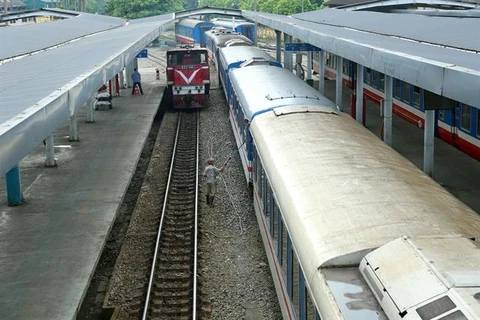Hanoi (VNA) - With the advantage of transporting goods in large volumes and in less time, experts have expressed an expectation that Viet Nam will soon invest in a high-speed railway network to boost socio-economic development.
Investment in high-speed railway should come soon
According to draft railway planning in the 2021-2030 period and vision to 2050 from the Ministry of Transport, Viet Nam’s railway sector aims to meet the transportation demand of 16.5 million tonnes of goods and 30.9 million passengers by 2030.
Investment of over 665 trillion VND is needed to achieve the plan. It also maps out an investment plan for a high-speed railway line (350km/h) between the capital city of Ha Noi and Vinh city, between Ho Chi Minh City and Nha Trang city in the central province of Khanh Hoa with a length of 651km (it can be put into operation in 2030 or 2032 depending travel demand).
By 2050, the transport sector will continue to invest in high-speed railways along the Vinh - Nha Trang section and build new routes such as Lao Cai province – Ha Noi - Hai Phong city, Di An - Loc Ninh, and Thap Cham - Da Lat city, and study other routes such as Nam Dinh province - Thai Binh province - Hai Phong city - Ha Long city, Dak Nong province - Binh Thuan province, Tuy Hoa - Buon Ma Thuot, and Can Tho city - Ca Mau province, among others.
Having studied the experience of developed countries and especially those with advanced railway networks, such as Japan, Vu Anh Minh, Chairman of the Viet Nam Railways Corporation (VNR), said that with Viet Nam’s natural conditions and geopolitical situation it is necessary for the country to develop high-speed railways.
He stressed that the necessary investment must be given due regard shortly because it would help boost socio-economic development.
With a 300 km/h hour train it would takes just six hours to travel the 1,540 km from Hanoi to Ho Chi Minh City or vice-versa.
Minh added that passengers would choose to travel from Hanoi to Nghe An by high-speed railway, as it would only take an hour.
He also noted that it is necessary to choose appropriate transport mode for passengers and goods. The State should also consider both national security and defence with current natural conditions, when selecting high-speed railways or expressways for economic development.
Diverse investment
According to Phan Le Binh, an infrastructure engineering expert with the Japan International Cooperation Agency, or JICA, investment in railway networks in Viet Nam has been modest in the past and far less than for other means of transport, making it more difficult to encourage commuters to travel by train.
However, with Viet Nam’s economic development over recent years, such as in 2020, when the country’s GDP ranked among the top 40 in the world, experts believe it
is time to determine how to invest in railway networks, which has been carefully studied over the past 10 years.
According to representatives from State management agencies and experts, given the enormous investment required, diverse investment in high-speed railways is considered feasible.
Dang Quyet Tien, Director of the Department of Corporate Finance at the Ministry of Finance, said the State’s resources are limited, so it is necessary to diversify investment in different stages. There are also many ways to mobilise capital, such as from the State budget, official development assistance (ODA) capital, and government bonds, among others./.






















